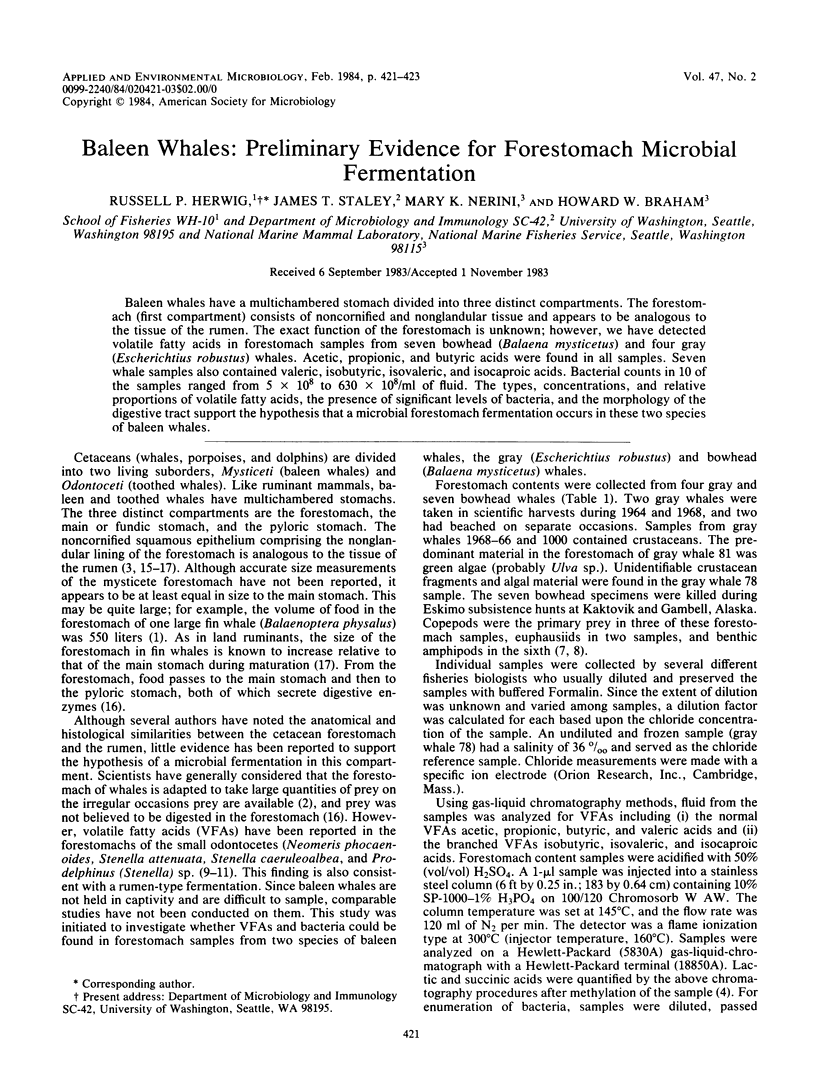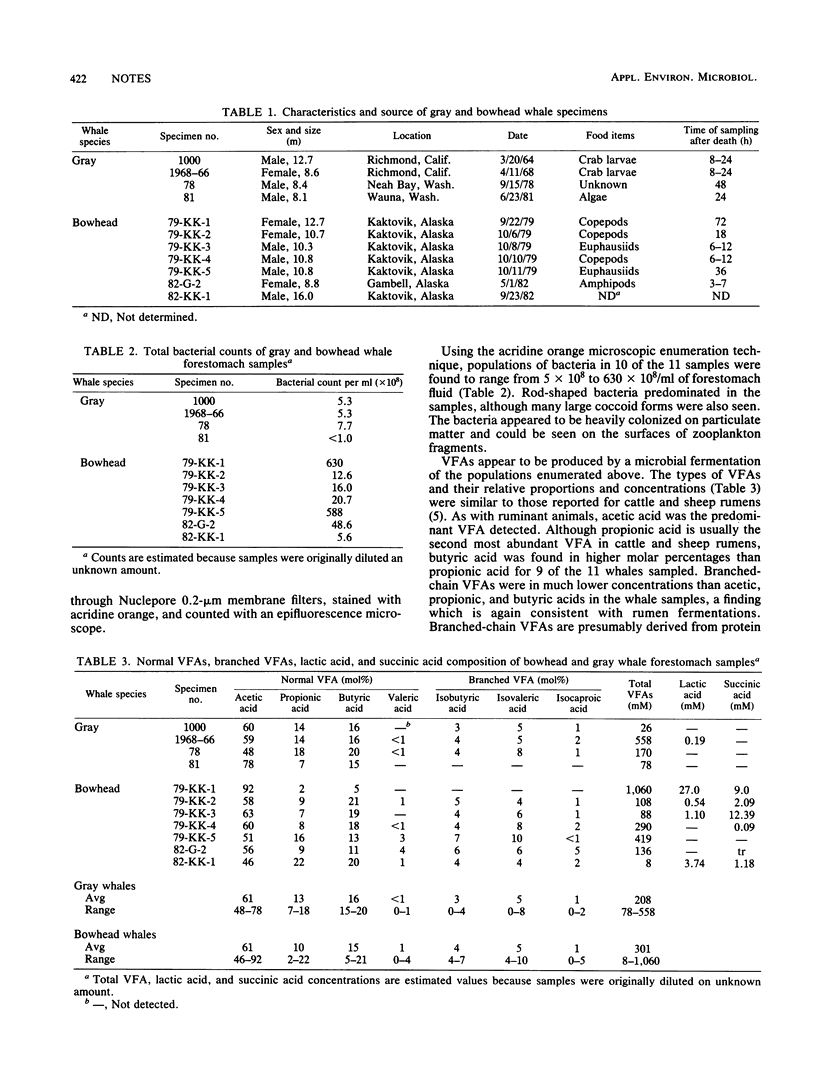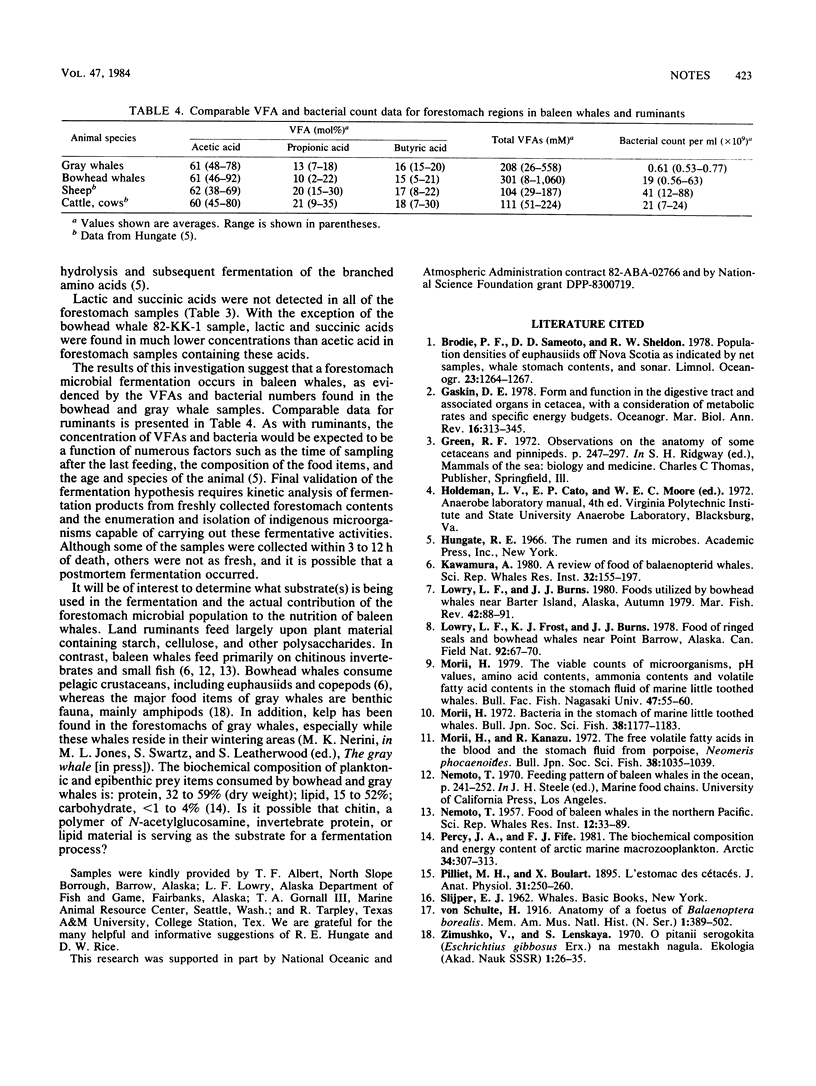Abstract
Baleen whales have a multichambered stomach divided into three distinct compartments. The forestomach (first compartment) consists of noncornified and nonglandular tissue and appears to be analogous to the tissue of the rumen. The exact function of the forestomach is unknown; however, we have detected volatile fatty acids in forestomach samples from seven bowhead (Balaena mysticetus) and four gray (Escherichtius robustus) whales. Acetic, propionic, and butyric acids were found in all samples. Seven whale samples also contained valeric, isobutyric, isovaleric, and isocaproic acids. Bacterial counts in 10 of the samples ranged from 5 X 10(8) to 630 X 10(8)/ml of fluid. The types, concentrations, and relative proportions of volatile fatty acids, the presence of significant levels of bacteria, and the morphology of the digestive tract support the hypothesis that a microbial forestomach fermentation occurs in these two species of baleen whales.
Full text
PDF




